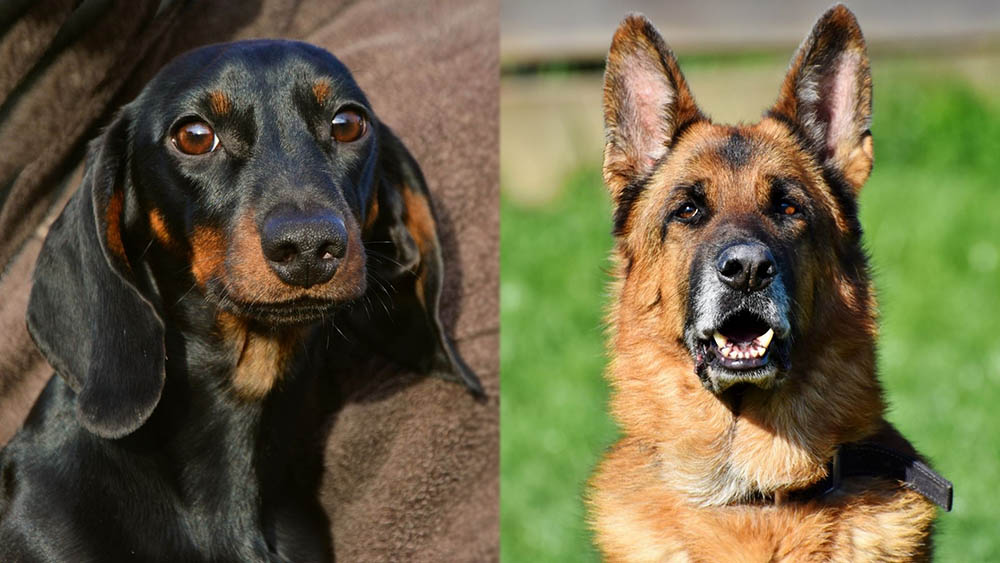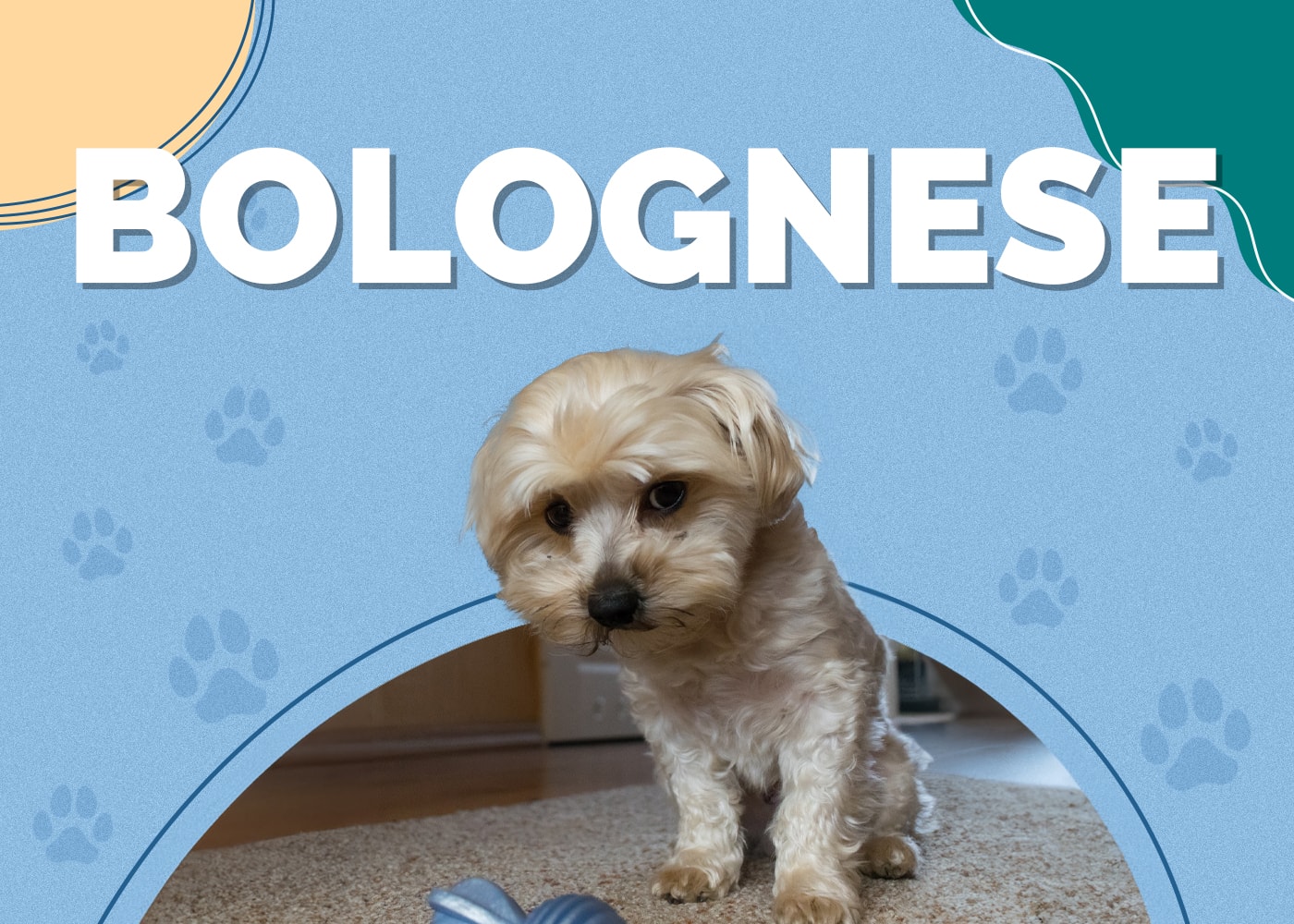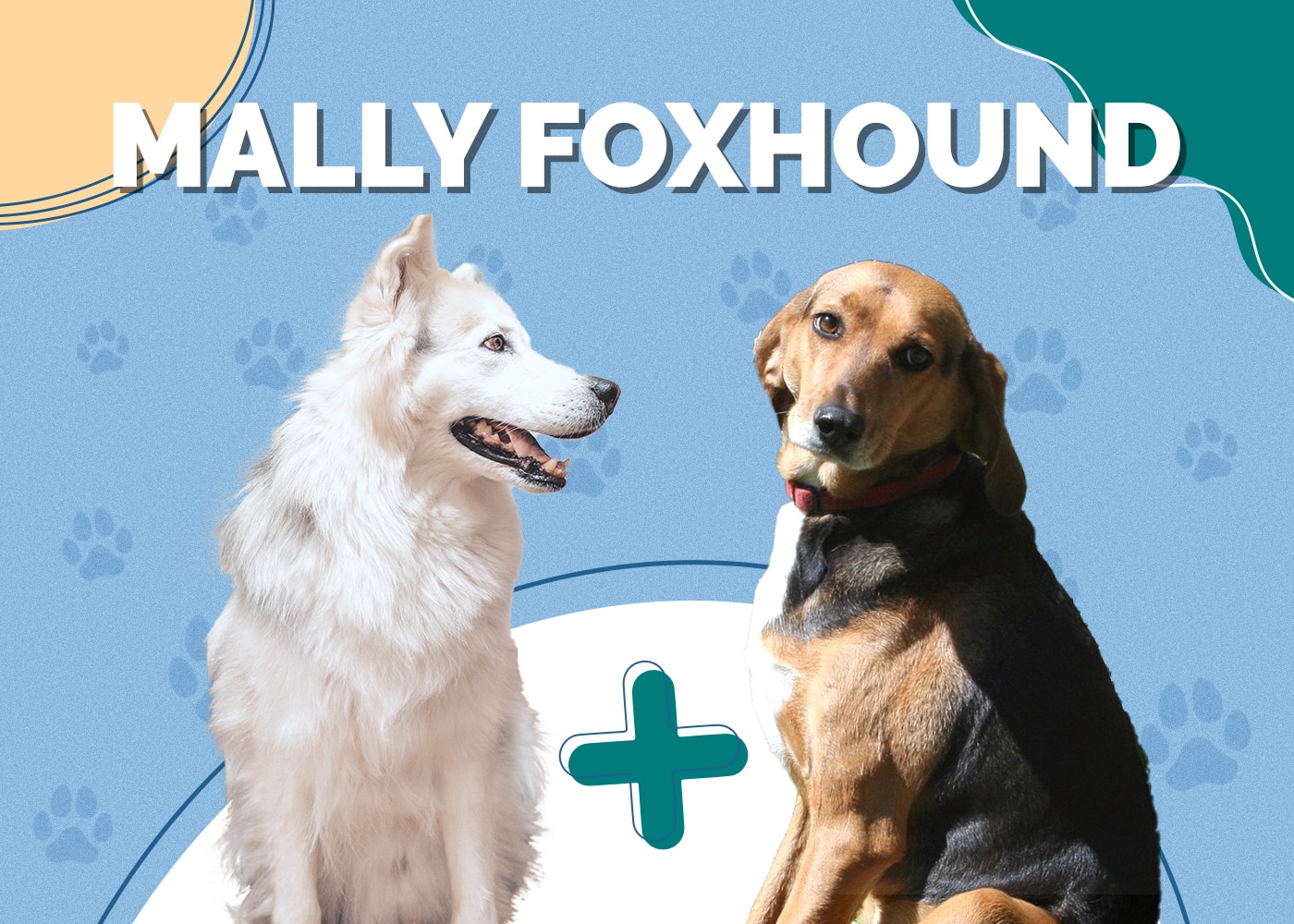German Schnauzer (Schnauzer/German Shepherd Mix) Info, Pics, Traits, Facts

Updated on

| Height: | 22 – 26 inches |
| Weight: | 65 – 90 pounds |
| Lifespan: | 10+ years |
| Colors: | Black, sable, black and tan, blue-grey, white, white and grey |
| Suitable for: | Homestead and rural living, active families, outdoor enthusiasts, experienced dog handlers |
| Temperament: | Keen, alert, sensitive, loyal, strong-willed, somewhat aloof |
German Schnauzers are a large hybrid, the result of crossing two protective working purebred dogs: the Giant Schnauzer and the German Shepherd. Both bred for guarding the lands and farms, German Schnauzers have all of the qualities needed for a family dog while providing a little extra security. Often aloof with strangers, German Schnauzers enjoy their jobs as the protective unit and can be a tough dog to handle. In the right environment, these large dogs can truly thrive and bond with their families. Let’s take a look at what it takes to own a German Schnauzer:
Schnauzer German Shepherd Mix Puppies
German Schnauzers aren’t purebred dogs, so their prices won’t be as high as purebred German Shepherds or Giant Schnauzers.
When looking for German Shepherd-Giant Schnauzer mix puppies, it’s important to find a breeder that is highly educated in dog genetics and crossbreeding dogs. It’s also equally as important to avoid backyard breeders and puppy mill dogs. Backyard breeders and puppy mills are driven by money and usually have no experience with breeding, so a good percentage of puppies end up having a laundry list of behavioral problems and health issues. This is especially true about popular breeds since they’re overbred to meet the demands.
Adopting a German Schnauzer is a good option, but this is a newer mix that most shelters and rescues will not have. Although adopting is always a great alternative, the chances of finding this specific mix are quite low. Adopting is also a longer process, depending on the shelter, which can be frustrating for you and your family.
3 Little-Known Facts About the German Schnauzer
1. German Schnauzers are BIG dogs.
German Schnauzer dogs are big dogs, especially if they’re mixed with a Giant Schnauzer. On average, these dogs will weigh around 85 pounds. If you’re considering getting a German Schnauzer hybrid but you’re worried about size, consider getting one mixed with a Standard Schnauzer instead.
2. Some German Schnauzers are hypoallergenic.
Although not all of them are, some German Schnauzers are hypoallergenic. This is due to the Giant Schnauzer’s coat, which grows like human hair and rarely trigger pet-based allergies. Some German Schnauzers have a mix of both coats, or they mostly inherit the German Shepherd’s coat.
3. German Schnauzers are highly skilled workers.
Between the determined focus of the German Shepherd and the keen intelligence of the Giant Schnauzer, the German Schnauzer is a true working hybrid. For some families and dog handlers, this is great for their lifestyles. However, it also means that they’re not suitable for everyone.

Temperament & Intelligence of the Schnauzer German Shepherd Mix 🧠
German Schnauzers come from two high-energy, powerful working breeds, so their temperaments are going to be somewhat similar. To get a better idea of what kind of temperament your German Schnauzer may have, let’s take a look at the temperaments of German Shepherds and Giant Schnauzers:
German Shepherds are highly intelligent dogs that enjoy active living and constant attention, which can be a challenge for inexperienced dog owners. They’re work-driven and thrive off of routines, especially if most of the day will be spent outdoors. German Shepherds are extremely trainable and versatile, but they need a confident, experienced dog owner in order to achieve this. When left to their own devices, these large dogs will grow bored very quickly. However, these dogs are endlessly devoted to their families and will gladly take up the role of the family protection dog.
Giant Schnauzers, the largest of the Schnauzer breed, are also known for their strong loyalty to their families. These large-sized variants are quite dignified compared to other breeds, often described as aloof with strangers. Giant Schnauzers are natural watchdogs and need to be socialized early, but they’re rarely aggressive towards new people. While they may sound unfriendly, Giant Schnauzers are playful and affectionate with their families. This is a true family dog, but they require a lot of time and space to keep them happy.
Are These Dogs Good for Families? 🏡
Yes and no. These dogs are great family dogs for active families that have had dogs before, especially working breeds. We do not recommend the German Schnauzer for first-time dog owners, families with rowdy, rambunctious children, or families that are not active enough to have a working breed.
Does This Breed Get Along with Other Pets? 🐶 😽
With other dogs, they’re generally okay but need to be introduced on neutral territory. In fact, some may benefit from living with another dog. The issue may come with introducing another dog after your German Schnauzer, which can trigger territorial tendencies and create a potential fight.
With cats and small animals, it will depend on how strong your German Schnauzer’s prey drive is. However, since both German Shepherds and Giant Schnauzers have high prey drives, we don’t recommend German Schnauzers for households with established small pets.
Things to Know When Owning a German Schnauzer
Food & Diet Requirements 🦴
German Schnauzers are high-energy working hybrids that will need a diet to support their daily activity levels. A diet of at least 25% crude protein with healthy fats and carbs is recommended, but additional supplements may be needed for your dog’s specific needs. Since large dogs tend to have more health problems, we recommend asking your veterinarian for dog food recommendations for a more customized diet plan.
Exercise 🐕
Exercising your German Schnauzer is incredibly important since they come from two working breeds with tons of energy to burn. At a bare minimum, your German Schnauzer will need a few long walks or a longer hike a day plus an hour or two of playtime or canine sports. Off-leash roaming is also crucial for this hybrid due to the natural guarding tendencies, so recall needs to be trained relentlessly if you don’t have a fenced-in property. However, some German Schnauzers may want more exercise and can seem like they’ll never tire out.
Mental stimulation is also crucial for German Schnauzers, but puzzle toys are usually not a big challenge after a while. Tracking is an exhilarating activity that can exercise the mind and body, while also relying on instinct to find the item being tracked. This can be done by hiding a favorite toy or blanket and leaving a scent trail for your German Schnauzer to pick up on, which will also build up its confidence.
Training 🦮
Training your German Schnauzer needs to start from day one to establish yourself as a leader, else you’ll have a problem puppy on your hands once it has adjusted to the new environment. Positive reinforcement training with a wide variety of food rewards is a great foundation, but consistency is important to prevent stubbornness and other behavioral issues. We recommend hiring a professional dog trainer with this hybrid, especially for inexperienced dog handlers or first-time dog owners.
Early socialization is also crucial to prevent people-based fear or aggression, as well as conditioning them to the outside world. Once your German Schnauzer has been socialized enough, consider taking up a dog sport like Schutzhund, or advanced obedience classes at a local dog training center.
Grooming ✂️
Grooming your German Schnauzer will depend on the coat type and length. Brushing out the coat will help reduce snarls and shedding, but how frequent will depend on your German Schnauzer’s coat. Bathing will also help reduce odors but should only be done once a month at most since overbathing can cause dry, irritated skin. Besides coat care, your dog’s nails will need to be trimmed at least every 3 to 4 weeks, or on an as-needed basis. For additional grooming and maintenance, contact your local grooming salon.
Health and Conditions ❤️
German Schnauzers come from two breeds that have quite a few conditions that they are prone to, but they still have relatively long and healthy lives. While there are no records on the health conditions of German Schnauzers, we can take a look at the German Shepherd and the Giant Schnauzer to get a better idea:
- Canine Hip Dysplasia
- Bloat/GDV (*Prominent in this breed*)
- Hemophilia
- Cancer
- Epilepsy
- Arthritis
- Progressive Retinal Atrophy
- Bloat/GDV
- Osteochondritis Dissecans
- Canine Hip Dysplasia
- Obesity
- Medial Canthal Pocket Syndrome
Final Thoughts
German Schnauzers are quite a sight to see, with their imposing size and aloof temperaments. These dogs are great for guarding farms and homesteads, but they can also do well with families that have very active lifestyles. Although they seem intimidating at first, German Schnauzers are playful and even clownish with their families. If you’re looking for an endlessly loyal guarding dog and you have the space, time, and knowledge for this intense hybrid, the German Schnauzer will not disappoint.
See also:
- Boxweiler (Rottweiler & Boxer Mix): Info, Pictures, Characteristics & Facts
- Boweimar (Boxer & Weimaraner Mix) Breed Info, Pictures & Traits
Featured Image Credit: Pixabay












